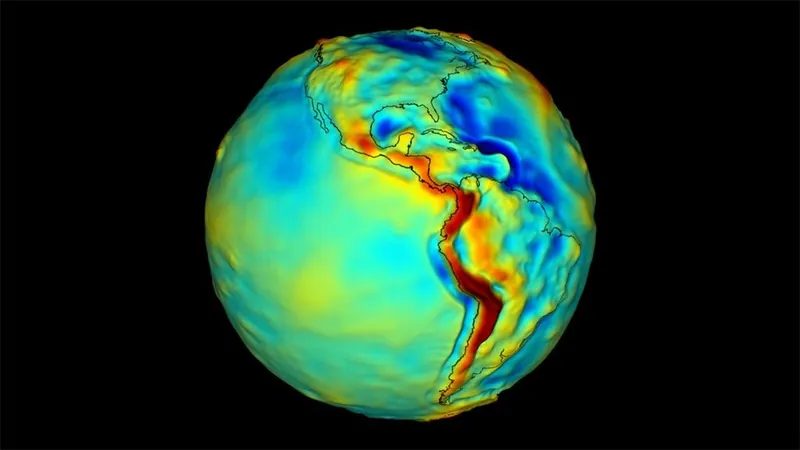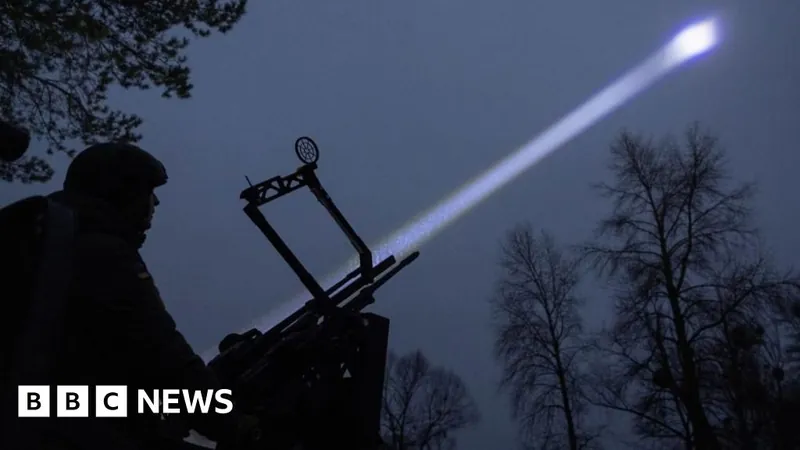
NASA's Groundbreaking Quantum Sensor Set to Transform Gravity Measurements
2025-04-15
Author: Emily
NASA's Revolutionary Leap into Quantum Sensing
In an exciting stride toward the future of space exploration, NASA's Jet Propulsion Laboratory, in collaboration with private enterprises and academic institutions, is developing the first-ever space-based quantum sensor specifically designed to measure gravity. Backed by NASA’s Earth Science Technology Office, this pioneering mission promises to unveil unprecedented insights into everything from oil reserves to the planet's fresh water supplies.
Understanding Earth's Dynamic Gravitational Field
Earth's gravitational field is not static; it shifts daily as geologic processes redistribute mass beneath our feet. Although these slight variations in gravity go unnoticed in our everyday lives, scientists employ advanced tools called gravity gradiometers to capture the subtle differences in gravitational strength. These insights are critical for effective navigation, resource management, and national security.
A Quantum Leap in Measurement Accuracy
"We could determine the mass of the Himalayas using atoms," stated Jason Hyon, the chief technologist for Earth Science at JPL. He has outlined the remarkable potential of their new Quantum Gravity Gradiometer Pathfinder (QGGPf) in a recent publication.
Gravity gradiometers operate by assessing how quickly objects fall under gravity in different locations. By contrasting the rate of fall between two free-falling objects—or test masses—scientists can identify differences in gravitational strength. For the QGGPf, two clouds of ultra-cold rubidium atoms are set to serve as these test masses.
Harnessing the Power of Ultra-Cold Atoms
Cooled to nearly absolute zero, the rubidium atoms behave like waves, providing an innovative method to track gravitational irregularities. With this advanced technique, JPL's Sheng-wey Chiow explains, "Using atoms provides highly consistent measurements. We minimize sensitivity to environmental factors, ensuring our data remains accurate over time."
Compact and Sensitive: A New Age of Gravity Measurement
One of the most striking features of the QGGPf is its compact design. Measuring only 0.3 cubic yards and weighing a mere 275 pounds, this quantum sensor is a fraction of the size of conventional gravity instruments. Additionally, quantum sensors are anticipated to be ten times more sensitive than traditional devices, marking a significant advancement in measuring gravity.
A Mission to Validate Groundbreaking Technologies
Slated for launch by the end of this decade, the QGGPf mission aims to validate innovative technologies that manipulate light and matter interactions on an atomic scale. Ben Stray, a postdoctoral researcher at JPL, emphasized the importance of this test: “We need to determine its operational efficiency to refine the quantum gravity gradiometer and expand the boundaries of quantum technology.”
Collaborative Efforts for a Stellar Future
This pioneering project underscores a deep collaboration between NASA and small businesses, with teams at JPL partnering with companies such as AOSense and Infleqtion. Meanwhile, NASA’s Goddard Space Flight Center is collaborating with Vector Atomic to enhance the laser optical systems.
Unlocking Secrets Beyond Earth
The innovations stemming from this pathfinder mission hold the potential not only to revolutionize our understanding of Earth but also to deepen our grasp of other planets and the cosmic role of gravity. "The QGGPf instrument will contribute to advancements in planetary science and fundamental physics," Hyon concluded.









 Brasil (PT)
Brasil (PT)
 Canada (EN)
Canada (EN)
 Chile (ES)
Chile (ES)
 Česko (CS)
Česko (CS)
 대한민국 (KO)
대한민국 (KO)
 España (ES)
España (ES)
 France (FR)
France (FR)
 Hong Kong (EN)
Hong Kong (EN)
 Italia (IT)
Italia (IT)
 日本 (JA)
日本 (JA)
 Magyarország (HU)
Magyarország (HU)
 Norge (NO)
Norge (NO)
 Polska (PL)
Polska (PL)
 Schweiz (DE)
Schweiz (DE)
 Singapore (EN)
Singapore (EN)
 Sverige (SV)
Sverige (SV)
 Suomi (FI)
Suomi (FI)
 Türkiye (TR)
Türkiye (TR)
 الإمارات العربية المتحدة (AR)
الإمارات العربية المتحدة (AR)